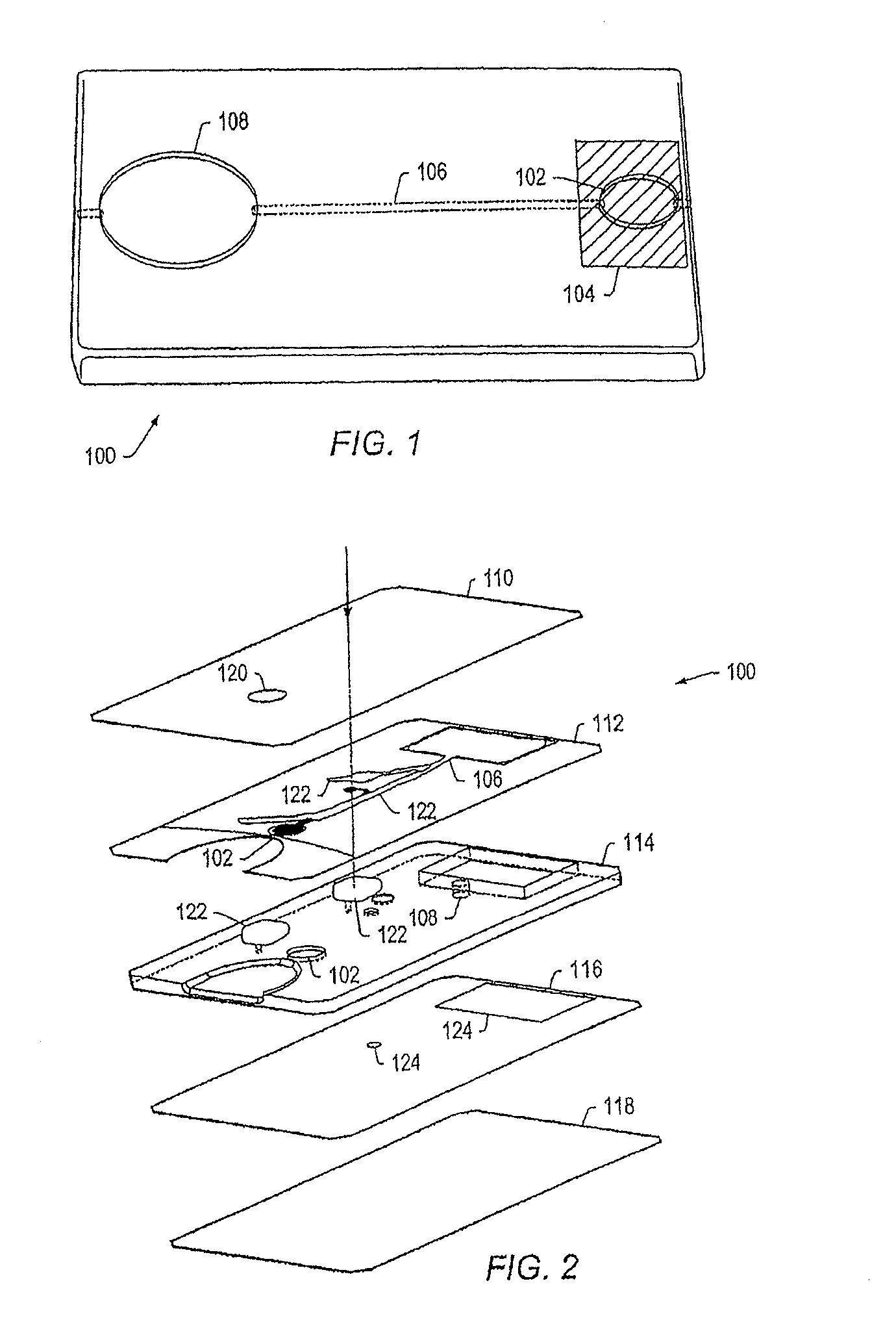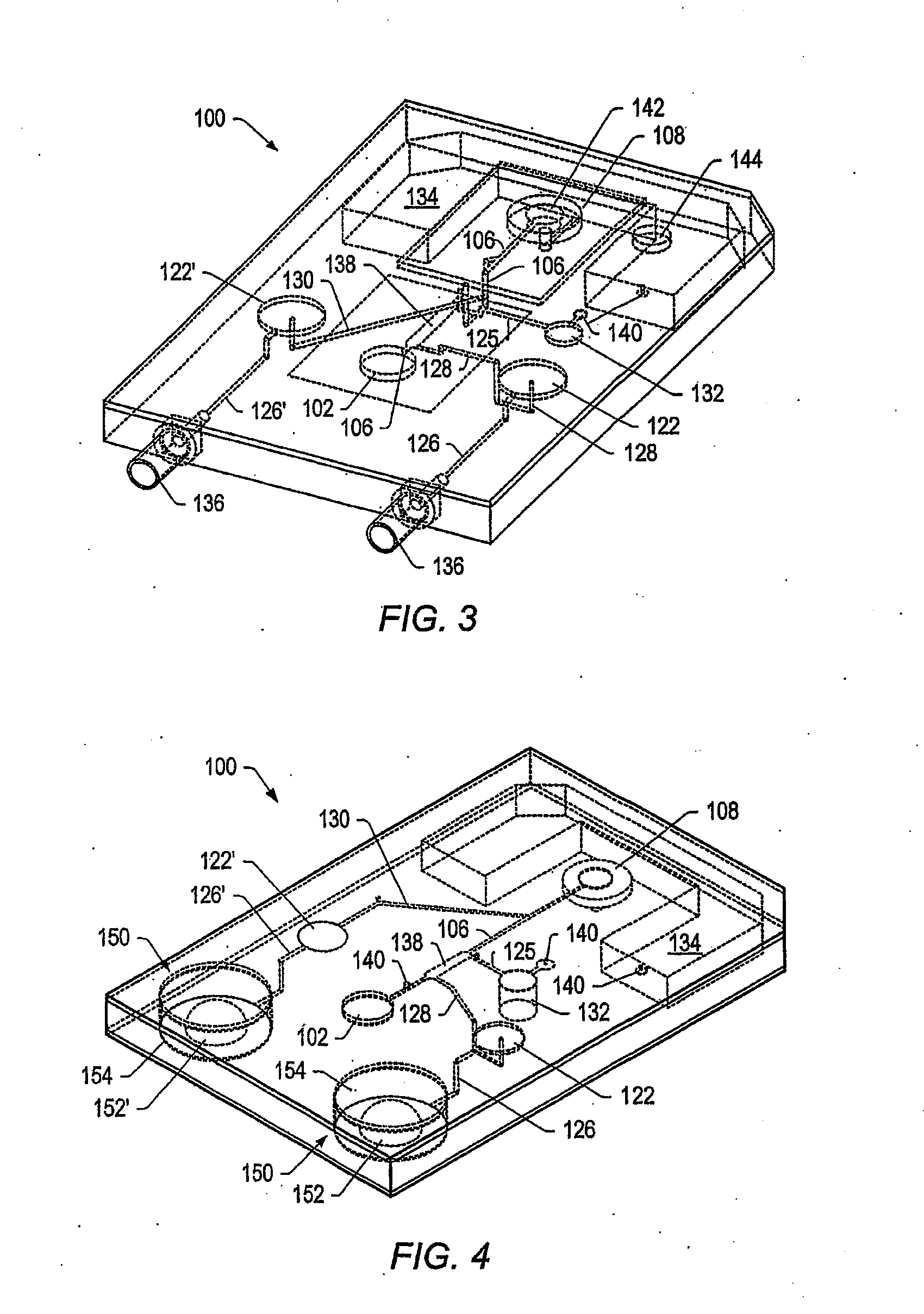Detecting tumor biomarker in oral cancer
a tumor biomarker and oral cancer technology, applied in the field of cell biology, medicine, diagnostic assays and systems, can solve the problems of inability of the particle to pass through, the particle is attached to the particle, and the filter is not easy to pass through, so as to improve the spatial resolution, increase the method's sensitivity, and the effect of rapid analysis
- Summary
- Abstract
- Description
- Claims
- Application Information
AI Technical Summary
Benefits of technology
Problems solved by technology
Method used
Image
Examples
Embodiment Construction
[0090] In various embodiments, an analyte-detection system may be used to analyze a sample containing one or more analytes. Samples may be fluid samples, e.g., a liquid sample or a gaseous sample. The analyte-detection system may, in some embodiments, generate patterns that are diagnostic for both the individual analytes and mixtures of the analytes. In some embodiments, the analyte-detection system includes a membrane capable of retaining a portion of the sample. The analyte-detection system, in certain embodiments, may include a plurality of chemically sensitive particles, formed in an ordered array, capable of simultaneously detecting different analytes. In some embodiments, the analyte-detection system may be formed using a microfabrication process, thus allowing the analyte-detection system to be economically manufactured.
[0091] Terms used herein are as follows:
[0092]“Analyte” refers one or more substances undergoing analysis. Examples of analytes include, but are not limited...
PUM
| Property | Measurement | Unit |
|---|---|---|
| width | aaaaa | aaaaa |
| width | aaaaa | aaaaa |
| width | aaaaa | aaaaa |
Abstract
Description
Claims
Application Information
 Login to View More
Login to View More - R&D
- Intellectual Property
- Life Sciences
- Materials
- Tech Scout
- Unparalleled Data Quality
- Higher Quality Content
- 60% Fewer Hallucinations
Browse by: Latest US Patents, China's latest patents, Technical Efficacy Thesaurus, Application Domain, Technology Topic, Popular Technical Reports.
© 2025 PatSnap. All rights reserved.Legal|Privacy policy|Modern Slavery Act Transparency Statement|Sitemap|About US| Contact US: help@patsnap.com



